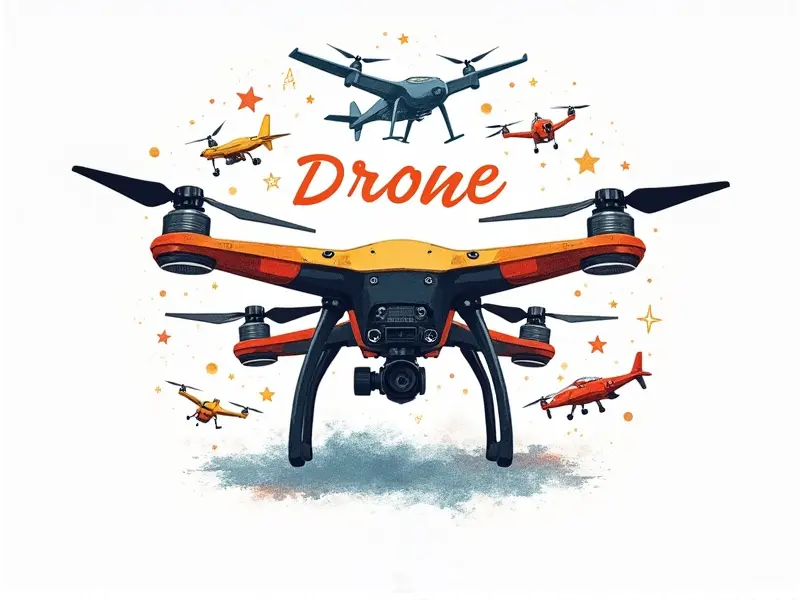Can RC quadcopters fly inside?

Can RC Quadcopters Fly Indoors Safely?
Flying remote control (RC) quadcopters indoors can be a thrilling experience, but it requires careful consideration and preparation. Indoor flying presents unique challenges that differ from outdoor flights due to the confined space and varying environmental conditions.
Inside Flying with RC Quadcopters: Tips & Tricks
To ensure safe and enjoyable indoor flight experiences, here are some essential tips:
- Choose a Suitable Indoor Location: Opt for large spaces such as gymnasiums or living rooms that offer ample room to maneuver.
- Avoid Obstacles: Be mindful of furniture and other objects in the flying area. Clear the space before taking off to minimize risks.
- Lights On, Windows Closed: Bright lights can affect visibility, so ensure adequate lighting while keeping windows closed to prevent drafts.
Best Practices for Flying RC Quadcopters Inside
Flying indoors demands a different set of skills and precautions compared to outdoor flights. Here are some best practices:
- Pre-flight Inspection: Check your quadcopter’s battery, propellers, and any other components before each flight.
- Control Adjustments: Modify control settings for indoor conditions, such as adjusting the sensitivity of controls to better handle confined spaces.
The Challenges of Indoor RC Quadcopter Flight
Flying indoors comes with its own set of challenges:
- Limited Space: The restricted area can make it difficult to maneuver the quadcopter effectively.
- Different Airflow Patterns: Indoor air currents can be unpredictable, affecting flight stability and control.
How to Maximize Indoor Flight with RC Quadcopters
To get the most out of your indoor flying experience, consider these strategies:
- Practice Hovering: Focus on mastering hovering techniques in small spaces.
- Use Smaller Quadcopters: Opt for smaller models that are easier to control and maneuver indoors.
Is Your RC Quadcopter Made for Indoor Use?
Not all quadcopters are designed for indoor flying. Look for features like:
- Built-in Obstacle Avoidance Systems: These help prevent collisions with walls and other objects.
- Lightweight Construction: Lighter materials make it easier to control the quadcopter in tight spaces.
Top Tips for First-Time Indoor RC Quadcopter Flyers
If you're new to indoor flying, here are some tips to get started:
- Start Small: Begin with a small quadcopter and gradually move up as your skills improve.
- Learn Basic Maneuvers: Focus on mastering basic flight maneuvers like hovering before attempting more complex moves.
Best RC Quadcopters for Indoor Flying
Several quadcopter models are well-suited for indoor flying, including:
- DJI Mini 2: Compact and lightweight with excellent stability indoors.
- Hubsan X4 H107D: Small size makes it ideal for tight spaces.
Indoor vs Outdoor: RC Quadcopter Differences
The primary differences between indoor and outdoor flying include:
- Space Constraints: Indoor flights are limited by the available space, whereas outdoor flights offer more freedom.
- Airflow Conditions: Outdoor air currents can be stronger and less predictable compared to the stable conditions indoors.
Exploring the Limits of Indoor RC Quadcopter Flight
Flying indoors pushes you to refine your skills in a controlled environment. Experiment with different maneuvers and techniques to enhance your flying abilities:
- Practice Precision Flying: Focus on precise movements and control.
- Test Your Limits: Gradually increase the complexity of your flight patterns as you become more comfortable.
Is Your RC Quadcopter Ready for Indoor Flying?
To ensure your quadcopter is prepared for indoor flights, check that it:
- Has Adequate Battery Life: Ensure the battery can sustain a longer flight duration indoors.
- Is Calibrated Properly: Adjust settings to optimize performance in confined spaces.
Conclusion
Flying RC quadcopters indoors can be an exciting and rewarding experience, but it requires careful planning and preparation. By following the tips and best practices outlined above, you can enjoy safe and enjoyable indoor flights while enhancing your flying skills in a controlled environment.

